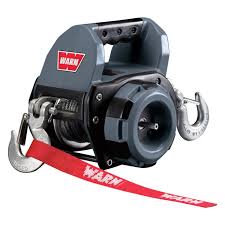We had two Yamaha Grizzly 700s with 32" mudder in laws on both of them, a 2" lift and gear reduction. We are big boys (both of us close to 300 lbs) and we buried our atvs to the racks in peanut butter mud with high suction, and we used Superwinch Terra 2500s for years and never had a problem.
Now I am going to share a few tips with people that I have learned not from atvs or side by sides, but I have been building 4x4 trucks for over 20 years and offroading... all of them had winches so I have a lot of experience with many different brands, styles, and both synthetic line and cable. I can tell you that how you operate the winch, will far more determine its life, then what brand it is. You can give me the winch you think is the toughest and I guarantee you I can break it in one try. I have used winches THOUSANDS of times of the last 20 + years.
Many people don't understand or know that winches have a certain amount of time they can be ran, followed by a period of "cooldown" that should be allowed. The most basic way to determine this if you don't have the manufacturer's manual, is to put your hand on the winch motor. If it is too hot to hold your hand there for 10 seconds, you should let it cool down for about 10 mins. This will dramatically extend the life of the winch!
Also when you are winching out of sand or mud where there is a "suction", winch about a foot or so to put a load on the winch, then stop and allow some time (maybe 15 or 20 seconds) for the suction to slowly release. DO NOT just keep winching not stop or you will break your rope/cable or damage the winch.
Also I use "snatch blocks" when ever possible. This reduces the load on the winch and cable/rope again further extending the life of them.
Now I know many people here love synthetic rope, as seen from the comments, but if you live in a sandy or muddy environment, I highly DO NOT recommend getting synthetic rope on a winch. When the sand or mud works it way between the fibers, those fibers stretch and move across eachother and the sand eats away at the fibers. This will cause the rope to fail in short time. If you don't believe me, contact any synthetic rope manufacturer and ask them how their product does with sand on the rope... I guarantee they will tell you to avoid sand 100%. Sand and mud does not effect cable.
Also another thing people don't usually take into account is the brake drum is usually located inside the spool area of the winch. This is where a lot of heat is given off. As we talked about earlier, heat kills winches. Well with synthetic rope, you have a material wrapped around the drum that actually insulates that heat and holds it in. Steel cable on the other hand acts like a heat sink and actually helps dissipate the heat faster.
If you go on google and look up "synthetic rope vs cable winch" and read write ups from professional offroaders/writers for various magazines such as Petersons 4x4, or Offroad Magazine, etc, all these guys who have decades of experience and do this stuff everyday as a living, almost all agree that cable is much more robust and forgiving. The one advantage that rope has over cable is that it is much safer. That is the ONLY reason 4x4 competitions require it because there are lots of people around and safety comes 1st. Now that having been said, there are things you can do to make cable much more safe, such as hooking a "winch bag" to the line while winching.
Hope these tips help some extend the life of your winch regardless of what brand it is.


